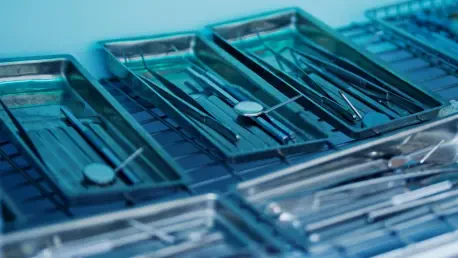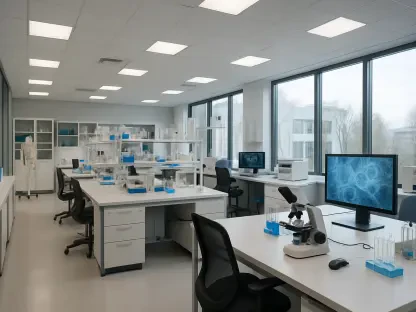The sterilization equipment market is witnessing remarkable growth, driven by substantial technological advancements and increasing awareness of hygienic practices. By the end of 2032, the market is projected to reach an impressive value of USD 18.44 billion, up from USD 7.0 billion recorded in 2023. This explosive growth is attributed to several factors, including the rise in surgical procedures and stringent regulations aimed at minimizing the risks of hospital-acquired infections. Government agencies such as the European Medicines Agency and the U.S. Centers for Disease Control and Prevention are enforcing rigorous sterilization policies that are driving demand for cutting-edge sterilization solutions. Additionally, the COVID-19 pandemic has acted as a catalyst, accelerating investments in sterilization technologies and boosting their adoption across research, pharmaceutical, and healthcare sectors. As a result, both public and private sectors are focusing on enhancing sterilization equipment to ensure patient safety and compliance with evolving standards.
Technological Innovations and Market Drivers
Technological advancements have been at the forefront of the sterilization equipment market’s expansion, bringing transformative changes to how sterilization procedures are conducted in various settings. Notable industry players such as Getinge Group, STERIS Corporation, and 3M Healthcare are actively investing in research and development to create more efficient, compliant, and safer sterilization systems. These innovations include automated sterilization machines, advanced monitoring systems, and eco-friendly sterilants that enhance operational efficiency while reducing environmental impact. The increase in surgical volumes and the growing number of outpatient care centers have further amplified the demand for advanced sterilization solutions. Enhancements in sterilization technology are not only increasing the speed and effectiveness of the process but also addressing compliance with rigorous regulations set by health authorities. This evolution is fostering a competitive landscape where companies strive to offer state-of-the-art equipment to meet the dynamic needs of healthcare providers.
Impact of COVID-19 and Regional Growth
The COVID-19 pandemic significantly impacted the sterilization equipment market, accelerating the deployment of innovative sterilization solutions across the globe. As healthcare facilities grappled with unprecedented challenges, the need for effective infection control measures became paramount, prompting government bodies and industry stakeholders to invest heavily in sterilization technologies. This increased demand is evident in the rapid growth of the U.S. market, predicted to swell from USD 1.86 billion in 2023 to USD 4.86 billion by the close of 2032. Hospitals, dental offices, pharmaceutical facilities, and research labs are driving this growth, seeking reliable equipment to maintain hygienic environments and protect public health. Additionally, stringent sterilization policies enforced by regulatory bodies have incentivized the adoption of cutting-edge technologies. As a result, manufacturers are focusing efforts on enhancing their product offerings to cater to shifting market needs and compliance requirements, setting the stage for sustained growth.
Future Considerations and Implications
The market for sterilization equipment is experiencing significant growth, fueled by advancements in technology and heightened awareness of the importance of hygiene. By 2032, this market is expected to soar to USD 18.44 billion, a striking increase from the USD 7.0 billion noted in 2023. This rapid expansion is influenced by factors such as the growth in surgical operations and strict regulations intended to reduce hospital-acquired infection risks. Governing bodies, like the European Medicines Agency and the U.S. Centers for Disease Control and Prevention, are implementing stringent sterilization protocols, thus boosting demand for innovative solutions. The COVID-19 pandemic has further accelerated investment in sterilization technologies, promoting their uptake across research, pharmaceuticals, and healthcare. Consequently, both government and private sectors are intensifying efforts to advance sterilization equipment, aiming to enhance patient safety and meet dynamic regulatory standards.









